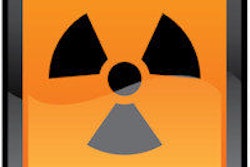The demand for radiotherapy across all European countries will climb by an average of 16% between 2012 and 2025, with the highest increase expected for prostate cancer cases (24%), according to a new study published in Radiotherapy and Oncology (24 February 2016).
The projections come from the Health Economics in Radiation Oncology (HERO) project of the European Society for Radiotherapy and Oncology (ESTRO). The results will also be presented at the ESTRO 35 conference, to be held in Turin, Italy, from 29 April to 3 May.
The research group, made up of senior radiation oncologists and epidemiologists from Belgium, Denmark, Spain, France, and Australia, analyzed European cancer incidence for the year 2013 by country and tumor site, employing data from the International Agency for Research on Cancer (IARC) GLOBOCAN project on worldwide cancer incidence and mortality.
Using statistical modeling, the researchers applied the 2012 country, sex, and site incidence rates to the population forecast for 2025 to obtain projections of new cancer cases for that year. The detailed estimates produced some major increases.
In breast, head and neck, lung, prostate, and rectal tumors, which account for the highest percentage of patients in a radiotherapy department, there were relative increases of more than 25% in rectal patients for whom radiotherapy would be indicated in Spain, the Netherlands, and the Czech Republic. Meanwhile, in Belgium, the U.K., and Denmark, there were estimated increases of more than 20%.
Prostate cancer showed the highest expected increase over the period, with a 24.4% rise, followed by bladder cancer (21%) and multiple myeloma (20.4%), whereas projected increases in female breast cancer, lymphomas, and head and neck cancer were below average, according to the research.
About 4 million new cancer patients are expected in Europe in 2025 based on demographic changes; this represents a 15.9% increase on the 3.4 million diagnosed in 2012, assuming that overall cancer rates remain unchanged. Of these 4 million, the number of patients who would benefit from radiotherapy treatment at least once during the course of their disease would rise from approximately 1.7 million patients in 2012 to 2 million in 2025, which represents an increase of 16.1%.
The increase in new cancer cases is largely due to the aging European population, who are experiencing increased longevity and lower fertility levels. The very old (80 years and older) now make up the fastest-growing population age group in Europe, the researchers said. Although migration also has an impact on demographic change, its impact is usually seen in younger age groups with a relatively lower cancer risk, they added.
The researchers hope the study will prompt European policymakers to invest in radiotherapy.
In other news, ESTRO intends to build a global partnership of organizations to help close the gap between the actual and the projected uptake of radiotherapy worldwide. A meeting will take place on 2 May to discuss this topic.



















